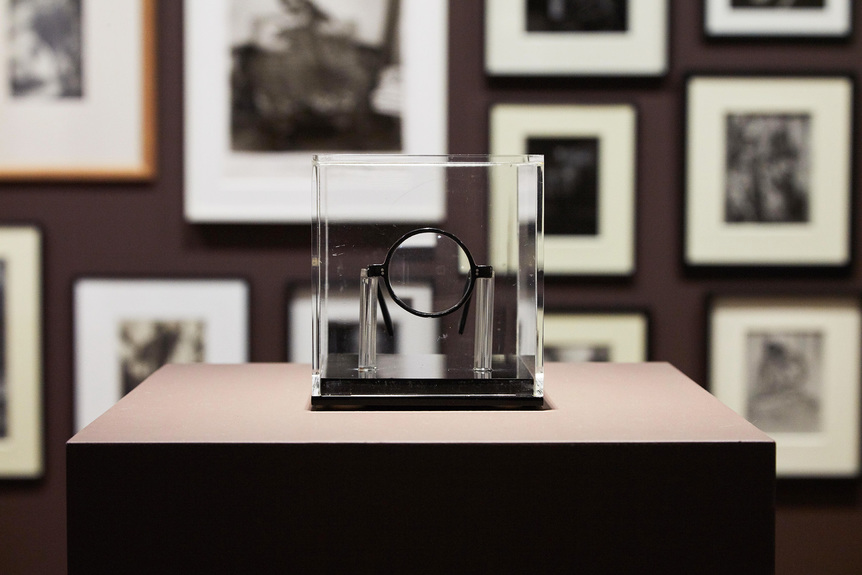-
From Current Issue
-
- Editor’s Letter Fire in the Heart
- Reviews I Gusti Ayu Kadek Murniasih
- Reviews 11th Seoul Mediacity Biennale: “One Escape at a Time”
- Dispatch Networked China
- One on One Monira Al Qadiri on Yukio Mishima
- Essays The rise of independent art spaces in pandemic-era Shanghai
- Features Tuan Andrew Nguyen
- Table of Contents
- Web Exclusives
- Archive
- Subscribe

R
E
V N
E
X
T
Installation view of “The Sylvio Perlstein Collection. A Luta Continua,” at Hauser & Wirth, Hong Kong, 2019. Photo by LCK Studios. Courtesy Sylvio Perlstein and Hauser & Wirth, Hong Kong / London / Somerset / New York / Los Angeles / Zurich / St Moritz / Gstaad.
Eschewing the traditional jumble-sale type exhibition typical of galleries in slower summer months, Hauser & Wirth Hong Kong presented a not-for-sale show featuring works in the collection of Sylvio Perlstein for the first time in Asia. Curated by David Rosenberg, the nearly 200 paintings, photographs and installations by around 112 artists sprawled across the gallery’s two floors. These selections, although making up only a fraction of Perlstein’s profuse collection accumulated over five decades, embodied the collector’s taste for art that challenges aesthetic and conceptual normativity—or, as he described it, art that is esquisito, a Portuguese word meaning “strange and unusual.”
Perlstein’s pursuit of the peculiar was evident in the manyunexpected encounters and juxtapositions within the space. Arriving at the gallery’s upper floor, which exhibited conceptual and minimalist art from the United States, one spotted two monitors, each featuring a performer reciting simple, neutral sentences such as “I am a good boy. You are a good boy. We are good boys.” These lines are repeated over and over again, until the phrase morphs into something akin to a raged curse. This is Bruce Nauman’s iconic video work Good Boy Bad Boy (1985), which was shown facing an adjacent room filled with minimalist masterpieces by Sol LeWitt, Robert Ryman, Ad Reinhardt, and Donald Judd, among others—notably all male artists whose works are now written into art history, perhaps at the expense of their female counterparts. This nuanced display transformed Nauman’s work into a provocation, implicating those “good boys” in the unpronounced “bad” of patriarchy. Elsewhere, above a doorway, Lawrence Weiner’s banner screamed OVERDONE. DONEOVER. AND OVERDONE. AND DONEOVER (1971), as a meta commentary on the question of originality in art practices, alluding to their self-repeating, paradoxical histories.
On the lower floor, visitors were treated to an older chapter of art history with primarily European works from the 20th century, when Dada and Surrealism paved the way for modernity. A mustached Mona Lisa in Marcel Duchamp’s L.H.O.O.Q (1919–64) was mounted next to René Magritte’s The Rape (1942), a portrait with facial features replaced by the torso of a naked woman. Behind Man Ray’s Obstruction (1920/64)—a chandelier made of clothes hangers—was another dialogue transcending time and place, in which Andy Warhol’s sketched 1975 portrait of Man Ray was shown alongside Ray’s own tribute to another artist, Hands of Yvonne Zervos Painted by Pablo Picasso (1937). Brought together in a single collection, these works revealed convergences in art history and created unusual sparks of connection.
One highlight of the show was a room dedicated to photography, a personal passion of Perlstein’s. At the room’s center, Marcel Mariën’s single eye-glass, The Elusive (1937), was a literal surrealist lens that anchored the display of myriad viewpoints, through which the veiled subject of Edward Steichen’s Portrait of Gloria Swanson (1924) seems to stare at the adjacent and opposite walls filled with vintage photographs. The densely packed prints weave together imagery from seemingly disparate worlds: Man Ray’s black-and-white headshot of The Venus de Milo (1930) was an apt companion piece to the colorful headless figure in Hans Bellmer’s The Doll (c. 1936), while Edward Weston’s close-up of a pale vegetable in White Radish (1933) bears an uncanny resemblance to Robert Frank’s intimate portrayal of pedestrians’ legs in New York City (1947).
Installation view of THOMAS MULCAIRE’s The Struggle Continues (A Luta Continua), 2003, neon, 40 × 450 cm, at “The Sylvio Perlstein Collection. A Luta Continua,” Hauser & Wirth, Hong Kong, 2019. Photo by LCK Studios. Courtesy Sylvio Perlstein and Hauser & Wirth, Hong Kong / London / Somerset / New York / Los Angeles / Zurich / St. Moritz / Gstaad.
Illuminating the exhibition’s entryway was Thomas Mulcaire’s neon sculpture A Luta Continua (2003), translated from Portuguese as “the struggle continues.” This present-tense proverb illustrates the current challenges in showing, collecting and producing art in capitalist societies, and was selected by Perlstein as the exhibition title for this very reason. Throughout his life, Perlstein has accumulated works that genuinely interest him rather than investing solely in big names. In the context of commercially driven Hong Kong, this exhibition was important and timely, revealing the story of a visionary collector and expanding discourse around contemporary art in the city.
Cassie Liu is an editorial intern of ArtAsiaPacific.
“The Sylvio Perlstein Collection. A Luta Continua” is on view at Hauser & Wirth, Hong Kong, until July 27, 2019.
To read more of ArtAsiaPacific’s articles, visit our Digital Library.

















